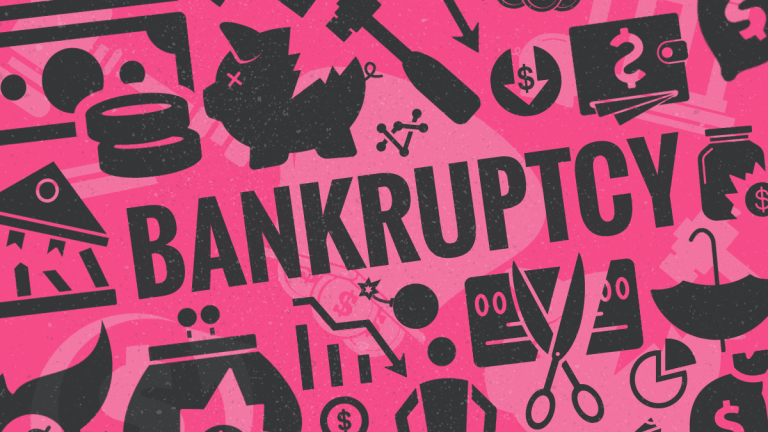SEO & Marketing
How to Find Your Next Keyword – Keyword Research

What is a Keyword? A Keyword, according to Webster’s Fourth New Collegiate Dictionary, is a word or phrase used as a label for a set of words. A more exact definition is “a single word or phrase used as a label for an article”.
In data retrieval, an index term, topic term, header, or subject word, in an electronic data recovery system, is a single term that captures the exact nature of an article. Subject terms from a controlled vocabulary for application in electronic databases.
One example is when Google wants to render its search results in something that resembles a “web log”. Search engines use keywords as parameters for ranking sites on their lists. Google’s motto is” Knowledge is Power”.
It is therefore not surprising that search engines regard phrases as keywords and use them as votes for ranking websites. An example of a search term used by Google is “How to Make Money in Stock Market – Advanced Ways to Make Money in Stock Market”, which shows that the phrase is a keyword.
Keywords can also be meta tags, if your website contains any HTML. Meta keywords are also part of search engine optimization (SEO). The process of keyword research is an integral part of SEO, but sometimes overlooked.
Keywords often serve as gateways to generate traffic, especially to small, niche-specific websites. But there is more to keyword research than generating traffic. Long Tail keywords are also an important aspect of SEO. They refer to keywords that have only two or three words that are frequently used in searching.
A lot of SEO efforts are focused on keyword stuffing, where the website uses as many keywords as possible. It may sound natural, but this approach often works against the site. It is considered bad SEO when websites tend to overdo keyword stuffing. In fact, some search engines have started to adopt stricter rules on how many keywords you can have on your web pages. Website owners should instead strive for a high content density for their keywords.
So, what’s so bad about keyword stuffing? First of all, it tends to make your site look crowded and less professional. It also makes it difficult for search engines to understand the main theme of your website. This can cost you in terms of ranking, not to mention traffic.

Some of the more successful websites in the world make full use of keywords in writing and structuring their web pages and even include some headings in the copywriting to help in building up an effective copywriting for the keyword.
Long Tail Keywords are terms that have fewer words that are commonly used in searches but have one or two specific things in common with your main keyword. For example, you could use “chocolate cake” as one word, but also use phrases like “cheese cake” and “chocolate dipped bananas” for examples. It all depends on how well these phrases match your main keyword phrase.
One thing to note is that these longer tail keywords take a longer amount of time to generate search engine results and are harder to rank for. However, if they have great SEO value then they will have higher search engine rankings and be more likely to attract visitors.
One last tip: If you want to know how to find your keyphrase, then there is a trick that I personally use that does wonders for my clients. They call it a blog post trick. Basically, what you do is write a blog post about your keyphrase (this works better if you write more than one blog post about your keyphrase). Then you submit the blog post to a popular article directory. The next thing you do is go back into your keyword research to find all the articles that were written around your keyphrase.
Also Read: What is SEO? How does it impact your Website Ranking?
SEO & Marketing
The Pros and Cons of Filing Bankruptcy

The Pros and Cons of Filing Bankruptcy
When we are faced with financial difficulties that seem to be insurmountable, most people will at one point consider the possibility of filing a bankruptcy, or even any other alternative to relieve themselves of their debt.
It is true that some benefits can be gained, both personally and financially, from filing bankruptcy. However, a person who has filed bankruptcy is necessarily making a decision to go out of their way to create a new, clean slate for themselves. This may sound like a big deal at the time; however, in the long-run it will prove to be far more beneficial than one that would not have been made if the person had chosen not to file bankruptcy.
Some people will do anything in order to avoid filing bankruptcy; this is not something that should be encouraged. If you are considering filing bankruptcy, read this article to make sure you have considered all of your options.
The Pros of Filing Bankruptcy
When you file for bankruptcy, it provides you with an option of starting over financially. You can begin to re-establish your credit and work toward paying off any remaining debt that is not included in the bankruptcy; in most cases this is referred to as a “wish list.” While it can be difficult to find a lending institution that will give you a loan, this is usually short-lived if you filed a bankruptcy that has been discharged.
It can provide an individual or a business with a new lease on life. If you successfully file bankruptcy and start over as responsible adults, you may be able to build stronger relationships with family members and even some creditors. While this is not always the case, there are a number of benefits to filing bankruptcy.
One of the primary reasons that people file bankruptcy is to ensure that their debtors can never seize their assets or property. When an individual or business files for bankruptcy protection, the automatic stay goes into effect and the creditor is prohibits from attempting to collect breath, paycheck, or vehicles.
It can provide an individual or business a new lease on self-holes. All unsecured debt will be eliminated and the dues will be paid by the individual or business. This will give the individual or business a clear wherein they are a head-start on rebuilding their financial future.
It can provide you with a second chance to better your lifestyle. If the credit card collectors have taken over your life and made your life miserable, they will no longer have a reason to harass you. Rather than facing out in the cold, providing a good living situation to the family while re-establishing one’s credit may be worth the stress of bankruptcy.
It can provide you with a guaranteed start, once again. Bankruptcy is a second chance, and a better time than never when it comes to financial independence.
Cons of Filing Bankruptcy
Filing for bankruptcy takes about 3 to 4 months to get your case heard and you are generally required to appear in court at this time also. A person who has been through bankruptcy can have a rough time trying to re-establish themselves when attempting to apply for a home or personal loan.
Avoiding the bankruptcy will not cheer you up. Your credit will be affected for a period of time. Since so many credit opportunities are available today, you may be bombarded by credit offers that are financial traps. A secured loan can be a common place to hang your hats for at least the next couple years.
If you want to know how to avoid bankruptcy you will need the following:
- A budget -Start off with doing a complete assessment of your monthly living expenses versus your income. Make a list of all necessary payments and make sure you account for your basic daily necessities. If you can carve out some leisure time in your budget, you can use these tactics to create a good routine.
- Avoid fees -Various fees can be attached to a person or business’ loan application. Take a close look at all enticements to ensure that you do not approve any payments that are unnecessary. These may include some family members fees, credit report fees, application fees, legal fees and more.
- Check your credit report -This is considered a hard and fast rule as the information in the report can change quickly. If you notice errors or problems, update it pretty fast.
One thing to keep in mind, you can always talk to your creditors and tell them about your financial situation. In most cases, they are knowledgeable and can offer suggestions for your situation. While they are not giving advice, they are very aware of the possible solutions to your financial problems.
Before you consider any otherSupporting paragraph, think long and hard about your reasons for wanting to file bankruptcy. Talk to your creditors and handle all options thoroughly.
The bottom line is, make sure you are still financially stable and are not encumbered by insurmountable debt.
SEO & Marketing
Debt Management – What a Debt Management Counselor Could Change

At the very outset, let’s understand that debt management is the only refinancing of loans that will make all your debts become manageable. At best, you could lose a few of your creditors and mortgage payments when finding a new loan.
Debt management, as in home mortgage refinancing, involves taking out a new mortgage that pays off your existing mortgages and other outstanding loans. This is another form of refinancing and therefore it entails a new loan that stays in effect until a new one is issued.
In any event, you will go for a debt management plan only when you have stopped paying your creditors and are looking at fresh loans and new credit cards. You discover a new source of credit, a new loan, and it takes care of all existing payments and the old lenders approach you as if nothing happened. Before entering into a DMP you must realize that your creditors don’t realize that you are in a DMP, which could be why you have trouble finding new credit.
One of the strategies a counselor might implement is getting unprintable written permission from you and your creditors on how your credit will now work. So the bottom line here is that a counselor needs to get the full picture from you and prepare applicable monthly expenses in relation to the future payments you will have to make.
Therefore, have a clear understanding of what service you are signing and absolutely must get it from a certified nonprofit agency in your area with both the state and the federal government regulatory agencies among others. Know that in applying for a DMP you may well need to contact each creditor you owe money to and get yourself enrolled. This is both to find out if you have a DMP plan and to get your payments in order, and is included with the counseling’s aim to help you achieve debt freedom. Or you could have already done so, so if you have, contact the counselor you are working with, explain your financial situation and why you are in a DMP, and ask what form they would provide this month depending on the amount of your monthly payments.
Don’t fall into the trap of having your counselor change your payments completely. Other things you need to realize about DMP services is they cannot start until you complete your creditors’ monthly payments if you happen to be one of the unemployed, see you are on hardship, or have a court judgment against you, are on child support payments or served in the military. Another thing that many people do not know about debt management counselors is that you can sign up for this plan while still paying your monthly payments and what you have done is simply turned your loans into one smaller payment each month and your payments have all been consolidated into one.
It is extremely important that you check this plan out with your paperwork beforehand to ensure that you are only receiving what you have said you are able to get – so get all the paperwork together approach your counselor and find out what is the limit and start getting your debts together today. One other pitfall with counseling services is that suddenly your bills may be hit with a large prepayment penalty as it is not uncommon to discover that a large prepayment penalty is in effect if you pay off early or to the amount the counselor suggested and here you need to be careful because there is a lot more behind the prepayment penalty than seemed showed in print.
If you are in particularly bad shape your counselor will do a service analysis and someone may advise you to pay off as much as you can and let it go, however the monthly payment may be so large that over time this monthly prepayment does nothing but put you further into debt. So, only proceed with a DMP after you have read these cautionary warnings. Also, when discussing how a DMP works ask about the options if a lender pays in full rather than at the negotiated value due to the borrower’s difference of the payments and interest computed at the time of the DMP.
Also ask what the monthly payment should be. Most of all ask if there are negative ramifications or risks of having a so-called counselor managed your money. Sometimes a counselor can warn you against a service and quickly mention a credit report score for your credit completion, however after you complete this important service and you are credited a bill, your credit may have already been destroyed anyway.
In Currently Non Collectable, your counselor may tell the borrower to stop paying their bills after completing the DMP and if that does not work you may need to talk directly to the creditor, but make sure to ask careful questions and find out if there are any special benefits or aversion to having to pay monthly on a different track for a period of time. And always have a plan if your DMP is not working the way you expected it in the beginning to help you achieve success in paying off your debts.
-
Gaming3 years ago
Download Grand Theft Auto V Reloaded (Ultimate Repack)
-
Gaming4 years ago
Make Custom Fortnite Skin in 6 easy steps
-
Cryptocurrency4 years ago
Are Bitcoin Transactions Anonymous? Everything Explained
-
Technology4 years ago
How to Stop Discord From Opening On Startup – Full Guide
-
Gaming4 years ago
Top 7 Games You Can Play With Intel HD 5500, 8GB of RAM, and an Intel i5 Processor
-
Technology3 years ago
What Is Quickbooks Online – Top Benefits of the Software Package
-
Technology3 years ago
Email Archiving Open Source – What You Must Learn
-
Cryptocurrency4 years ago
What is The Name of the General Ledger that Tracks all Bitcoin Transactions?






















Felisa Bernardon
January 11, 2021 at 12:01 am
That is some awesome content! Really appreciate you making this for everyone!
Eby T
January 12, 2021 at 9:00 am
Thank You.